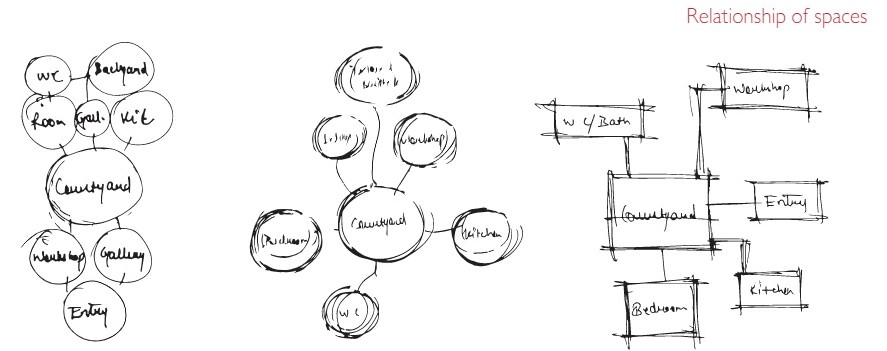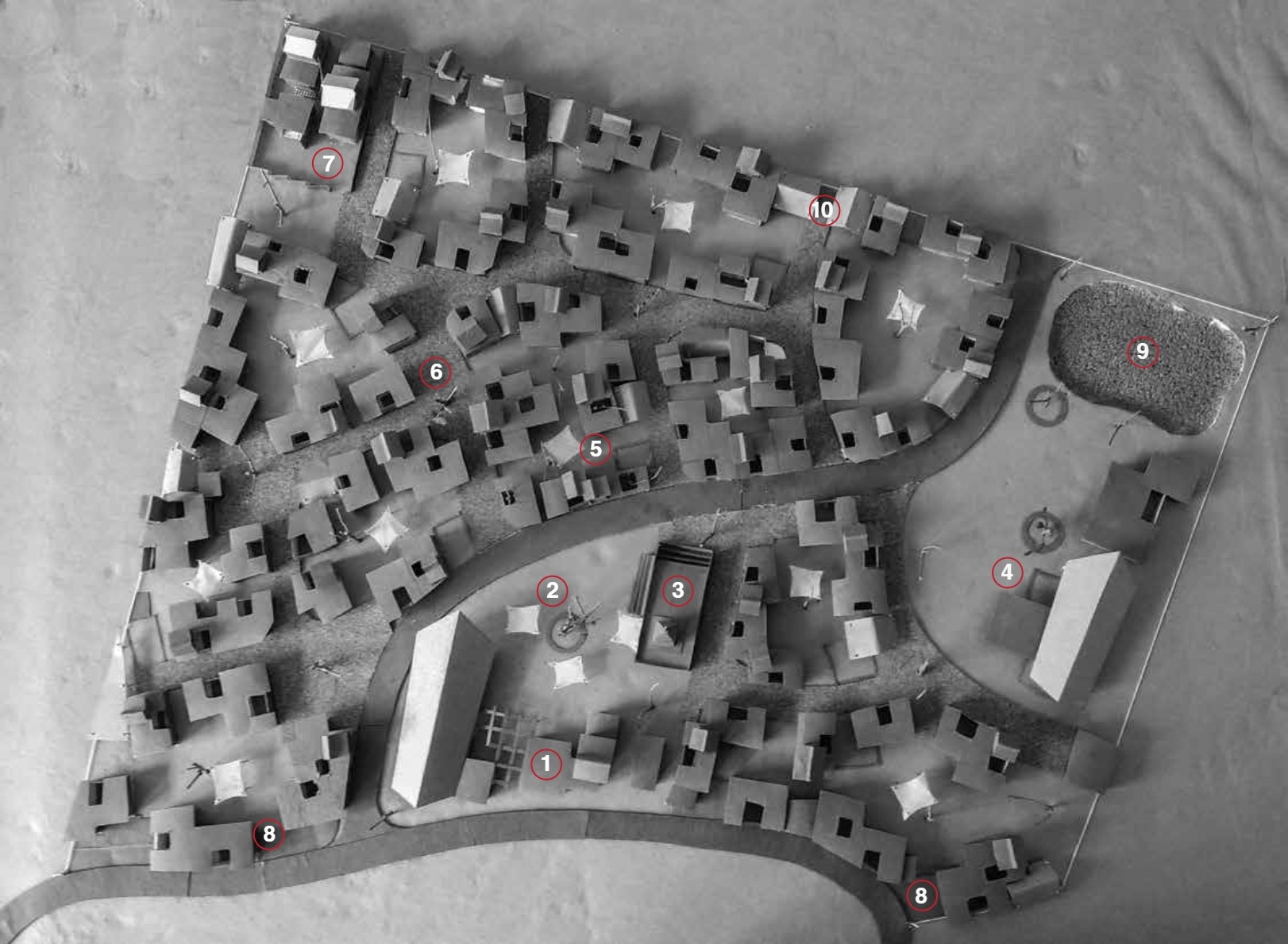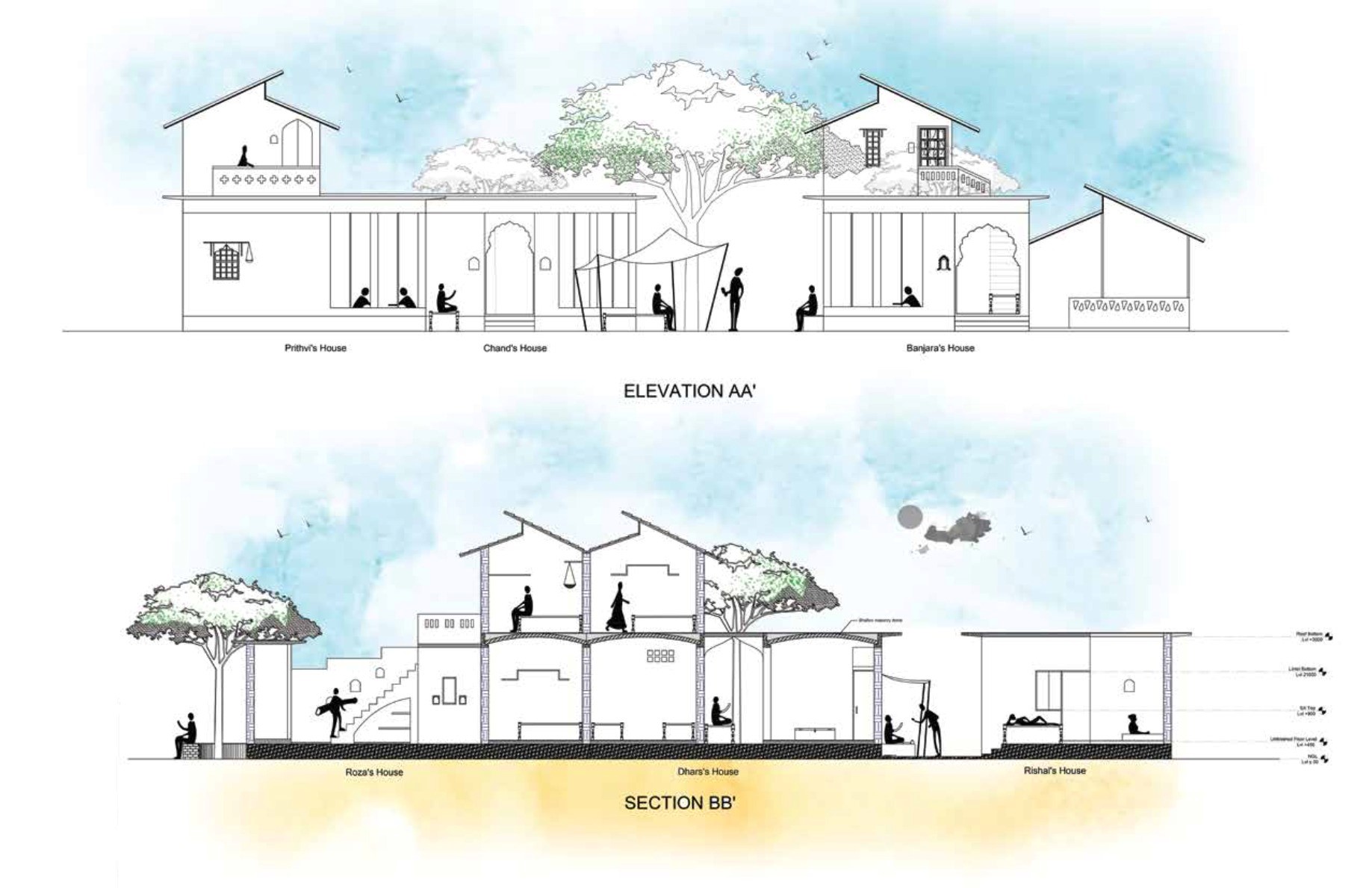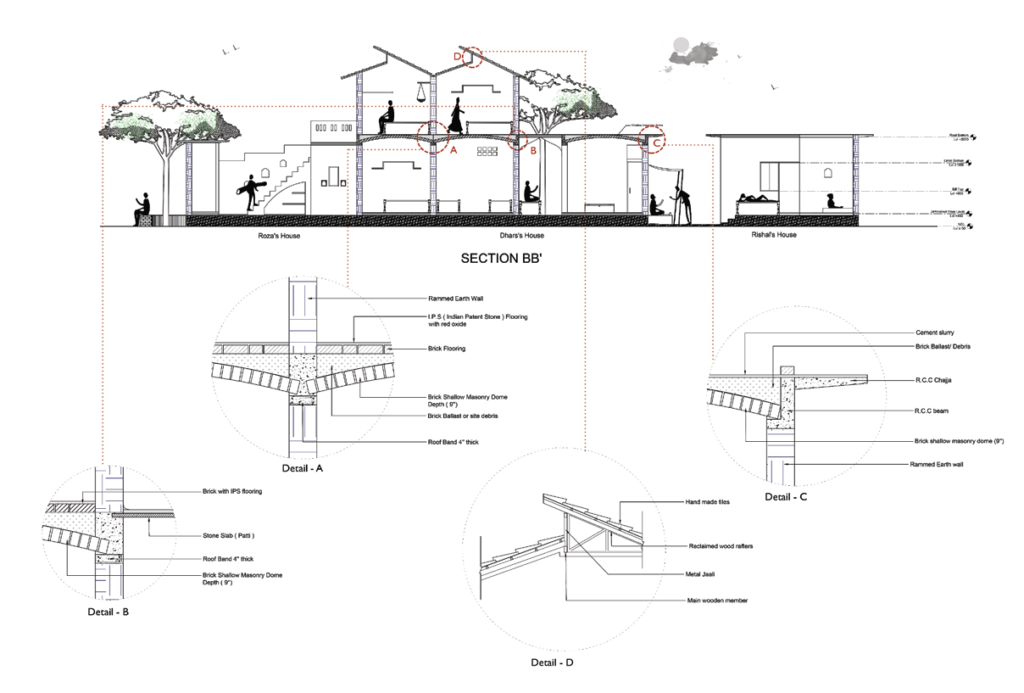Today Nomads have been under continuous pressure in recent years. Reformist changes in the economy, Industry, and Technology have threatened the livelihoods of these communities. Today village customers demand new technology products. This whole process has vanished the life and livelihood of the Gadulia Lohars.
In 2002 under IAY (Indra Awaas Yojana) a proposal was given to Gadulia Lohar, a nomadic community and alloted with 100 houses to settle on 6 acres of land.


Architecture Manifestations
Understanding the tangible and intangible spaces and their way of living to derive the process of evolution and design, and to understand the relationship of spaces and interpret the need for design. Studying the context, tools, and hierarchy of spaces to conclude the requirements of the area they need.



Relationship of spaces

Development controls

Social and cultural human standards derived from case studies and BIS

The Process: Evolution
The whole process of understanding their needs and problems has helped in the evolution of design and site. The discussions with the community on space-making and evolving the design slowly and gradually took around a year to get the final output. The idea was not to build a house, it was more about organizing and understanding the use of spaces, and mapping their movement patterns. The monthly discussions with the community in front of their existing temple derived the design brief, analyzing their connection with the ground helped in placing clusters, also, surveying different families from the communities helped in identifying the area of the house and the need for the workshop.






Site Interpretation
This site is situated between the urban and rural setting which is a farmland.
Its landscape is surrounded by lush vegetation and seasonal crops which act as a source of livelihood for the settlement. The approach to design was derived after a thorough narrative given by the nomads during the regular discussions with them.

- Infra for social gathering
- Space for decision making.
- Temple complex
- Regional development centre
- Thiya (cluster of houses)
- Public squares
- Aanganwadi
- Corner public shops
- Cattle sheds
Design Intervention
temple : road : public nodes : shamiyanas
Public square act as an informal space for social gatherings, setting bazaars, and connecting the clusters which maintain a continous human flow in the settlement. The shamiyanas between the clusters act as a space for the exhibition of tools and other hand made products. The space for decision making under a vast banyan tree beside the temple shows the connection with the ground and nature.





Religion in Governance
Temple acts as the core of the settlement as all streets open up towards the temple, also the glimpse of the temple shikhar can be seen from the streets as well as in between the clusters making it as a prime landmark of the settlement. Also, building edges are being cut and treated to create an informal sitting space.

Public Squares
One of the most important part of the Nomadic settlements are these public nodes/ squares consisting of informal sitting spaces and small tapris fulfilling the daily needs of the community. Also, it connects or binds all the clusters together which makes it a positive outdoor public space.

Thiya (Cluster)
Every house in the thiya is different because every individual is different in its own manner, the design of the house has been derived by restoring their identities and their individual sense of space. The shamiyana in between the cluster is acting as a core of thiya holding individual houses together, it is acting as a space for informal gathering and showcasing their tools and other products as well. Every house has an individual type of ‘baithak’ which is derived from their way of living and use of space.

Details




Shamiyana or Exhibition Spaces
Every unit has its own individual workshop space but the central courtyard consisting of a shamiyana, acting as a space for exhibition for the tools and utensils prepared by the Nomadic community. Also,
the placement of workshops are done in a way that shamiyana is visible from every unit.

Central spaces of Thiya
These central spaces connects all dwellings together and ties them in a string, every unit being unique has a central space in between which promotes social interaction and also gives origin to informal spaces and activities which are an important aspect of Nomadic settlements. Also the ground floor allows the community to stay connected with ground.

About the thesis
Submission year: 2020
Institute: Apeejay School Of Architecture and planning, Greater Noida, Delhi NCR
Guides: Main Guide- Ar. Madhurima Waghmare , Co-guide- Ar. Raj kumar Sharma








